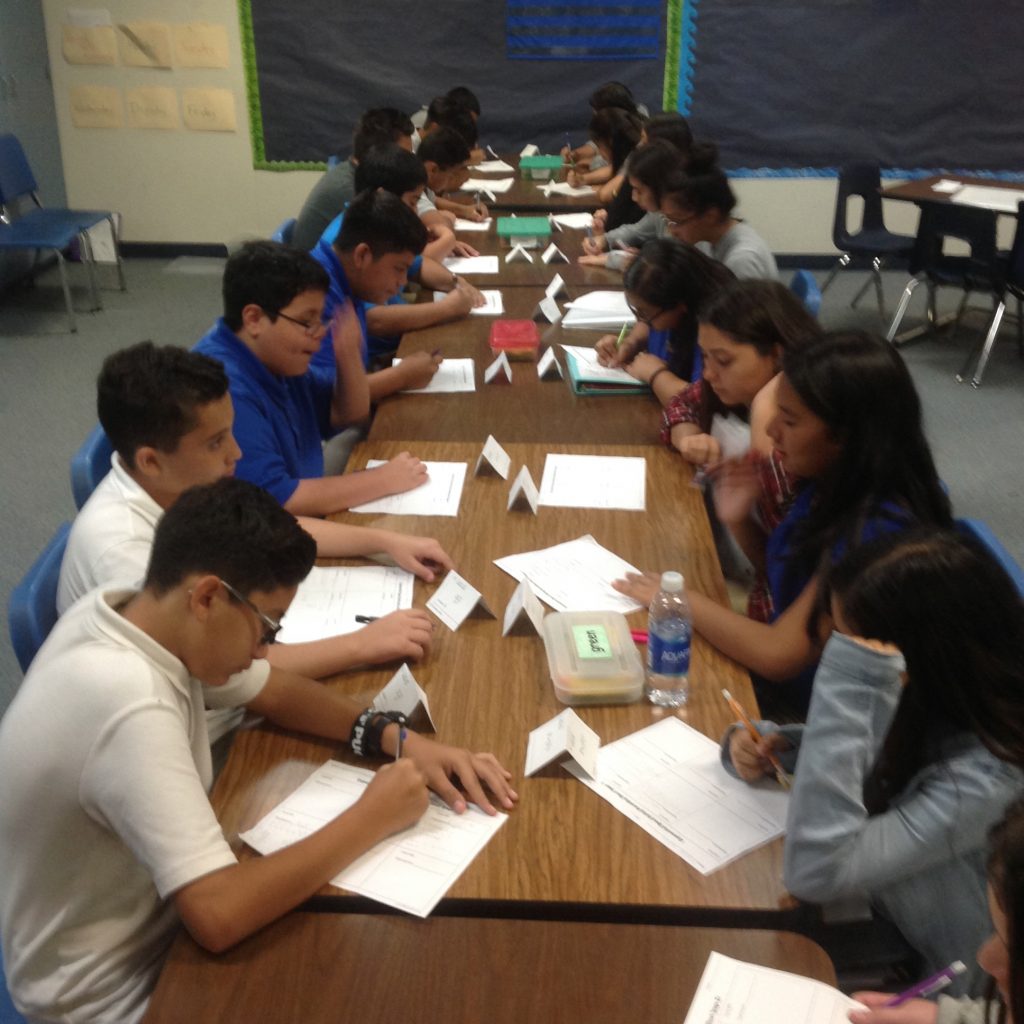
I first tried Math “Speed Dating” in my class this year. I had a double period to fill, and I had just read about it, and it seemed like it would be fun. I had no idea it would be such a productive use of time! I had students actively engaged in evaluating exponential expressions (not the most thrilling standard) for over forty-five minutes! Not only were they engaged, but they were working together, confidently explaining steps, and eager to understand each other’s methods. I was blown away!
Here are my top 4 reasons why Math Speed Dating is the perfect cooperative learning activity.
1. Math Speed Dating increases engagement.
It’s novel. The students walk into your room with all of the desks lined up in a giant train and half of the kids wonder if they’re in the right classroom. The activity itself makes students interact with different classmates but for a short enough time so that it never gets too awkward and they never have enough time to start goofing off. Each time students switch partners, they work on a new math problem, so accountability is high to learn the skill. They want to be able to show their next partner that they “got this.” All of this works together to keep kids far more on task and actively engaged than if they were solving each of the problems independently on a worksheet.
2. Math Speed Dating builds confidence.
When the activity begins, students receive the same problem that their partners across from them receive. This becomes the problem that each student is the “expert” at. Each time partners change, everyone’s new partner works on the problem that they are the expert at. So if my partner is having trouble with the problem, I’m the expert at that problem and can explain it. Students get practice explaining that same problem over and over, and each time their confidence grows a little higher.

3. Students want to learn the content.
Yes, even if the content is exponential expressions! Nobody wants to look like they don’t “get it,” especially in an activity called Speed Dating! This gives students a little more motivation to ask their partner to help them understand a problem—because in a minute they will have to switch partners and solve a similar problem. If I get help now, I just might be able to impress that cute girl who’s going to be my partner next!
4. Differentiation can be built in.
When I create the problems for a Speed Dating activity, I typically make the first couple problems the easiest and increase the difficulty with each problem. This way, when I assign starting seats, I make sure my struggling students are toward the beginning of the row and my higher students are toward the end. This way, lower students become experts at simpler problems and build confidence as they explain these problems to new people. My higher students stay challenged throughout as they must explain their more challenging problem to each of their new partners.
There you have it: the perfect cooperative learning activity. The first time you introduce Math Speed Dating to your students, I suggest you go at a slow pace to make sure students are taking their time to discuss the problems with one another and record their answers at the depth that you expect. Students might only move halfway down the row before the period is over. But the more they practice, the smoother things will go, and your students will blow you away with their discussions!
Try out some of my Speed Dating activities in my TpT store! Each set contains detailed instructions for setting it up in your classroom.



